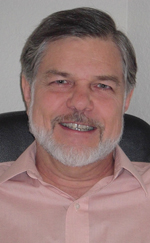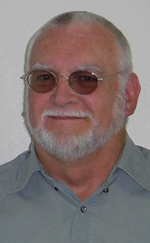We are Neurodiagnostics + Neurofeedback
Introduction
We have moved leading edge Neurodiagnostic and Neurofeedback services out of hospital-level pricing and into the affordable and more generally available. We have come together in the Point West area, across from the Arden Fair Mall to be accessible to the greater Sacramento region.
Jonathan Harris - Neurofeedback Clinician

I like creating the ideal conditions for neurofeedback to occur which extends from set-up of the room to research grade equipment to taking care of clients as they move through their neurofeedback intensive.
Earlier in my career I developed the system for controlling an experimental engine for NASA and DARPA projects. Ever since, I’ve had an enduring appreciation for how performance “symptoms” can be a consequence of control “stuckness” or lack of flexibility under changing environments. A human’s central control system, the brain, uses the frequency of changing electric potentials or brain waves to adjust system performance. With neurofeedback, we are exercising the brain out of stuckness and into the opportunity to respond with flexibility and resilience.
After my own personal life change through neurofeedback, I went on to study with Biofeedback International, Zengar, EEG Spectrum, EEG Info, and Thought Technology and then went on to take advanced courses with Val Brown, Sue & Sieg Othmer, Joel Lubar and Steve Stockdale.
I have taken hundreds of clients through their neurofeedback sessions at the busy, productive, and diverse clinic of Dr. Mark Steinberg - an outstanding educational/neuropsychologist in the Silicon Valley area and author of “ADD: the 20-hour Solution”.
At Optimal-Neurofeedback, I am happily providing neurofeedback to the Sacramento region.
Wayne Adamson - R.NCST/ENDT

Hans Berger developed the recording of the EEG on the human scalp in the 1920s. He identified the earliest wave types for humans and noted the alteration of waves in epilepsy. My earliest reference materials were by Frederic Gibbs, the American neurologist who pioneered the use of EEGs and who went to Europe to learn from Berger. Gibbs also worked with Albert Grass of MIT to develop the first multichannel EEG.
I came on the scene when barely portable transistorized equipment with 8 electric pens traced the waves onto moving paper. I traveled through hospitals in the Bay area taking the recordings and then delivering scrolls to MDs for their visual review, analysis and diagnosis.
Now I easily carry 32 channel equipment with me that allow a full 3-dimensional brain map recording that is transmitted electronically. MDs still review them visually, but using computer monitors.
Another innovation has been the development of databases of digitized normal EEGs. An individual EEG can be quantitatively analyzed - location by location, across the whole map of the brain for significant over- or under-activity at each location, and for how each location is interacting with the others. The analysis can reveal significant discrepancies of functioning that otherwise would be invisible. More precise remediation becomes possible.
Some of my most critical recording has been in operating rooms. When a nerve is stimulated at the ankle, an electrical potential can be evoked at a specific location on the scalp (Somatosensory Evoked Potentials – “SEP”). As surgeons operated on the spine, I would continuously monitor for pathway disturbances. In this way the surgeons could be warned early of proximity to critical central nervous system structures.
I’ve also provided visual and auditory evoked potential recordings to trace the functioning in those respective pathways. Again the electrical wave timing and form reveal what would otherwise be invisible or indeterminate.
In the research area, I’ve provided EEG recording for Reference EEGs (rEEGs) research at Stanford University and Nerve Conduction Studies for diabetic neuropathy at Diablo Clinical Research.
In a doctor’s office, for patients who may have a pinched nerve in the back or the neck, or a tingling or numbness in arms or legs, or carpal tunnel syndrome, I carry out a suite of measurements (NCV/EMG) to evaluate the electrical conduction of motor and sensory nerves and the electrical activity produced by skeletal muscles.
I’m comfortable working with a full variety of clients to get meaningful high quality recordings that Neurologists and specialists in Quantitative or Reference EEGs can effectively use.
